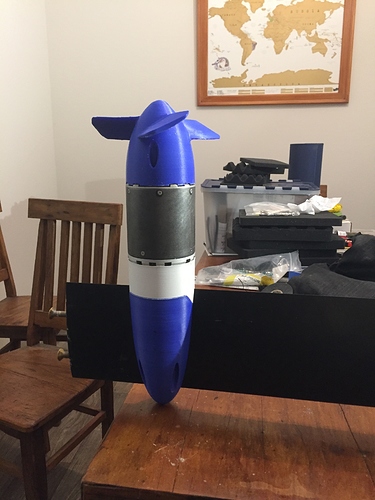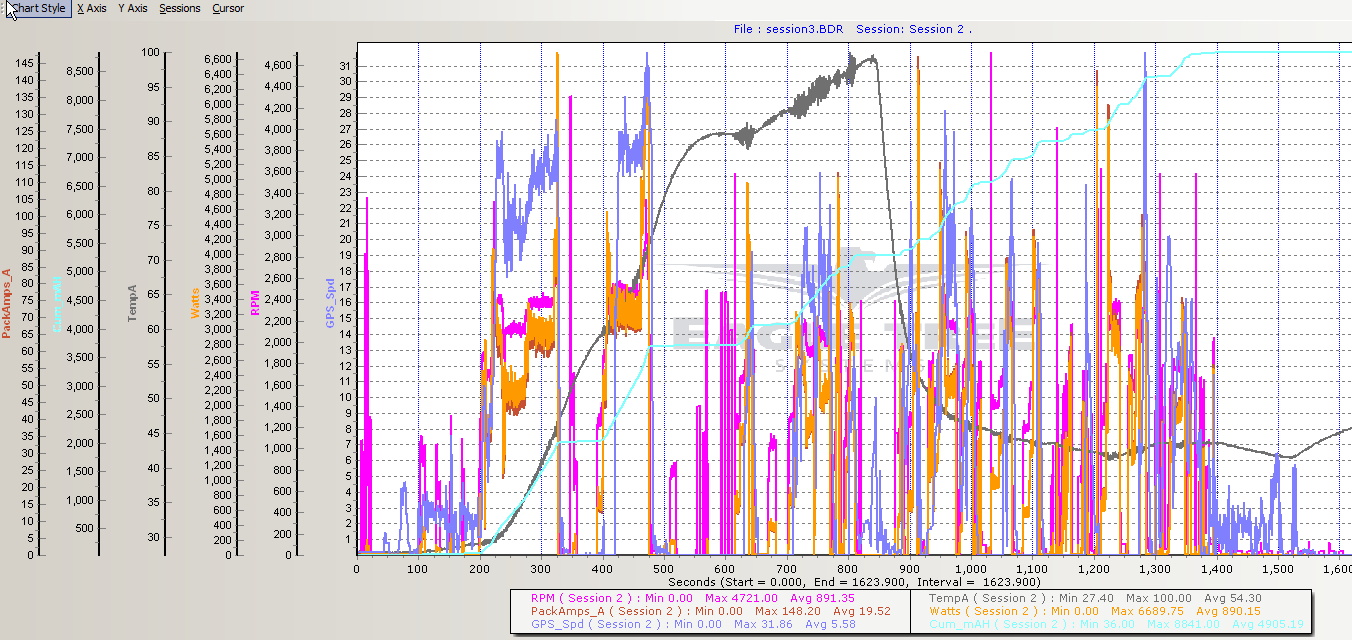And experiment with other printing materials!
Running a pla one now. We will see if this one lasts longer. Had 15 hours on the petg one.
Its too much thrust i guess. So the print time equals time of usage.
It’s a right of passage! Congratulations!
I too am a bit chunky. If you can’t snap your plastic prop with full throttle then you don’t have enough power!
Kidding, but if you have enough power to snap a prop your doing well. My sls nylon holds up well but I know I can’t go full beans off the mark.
Anybody know how many Poles are in the 80100? My ESC data logger needs to know for some reason. Beyond me!
I have two Alien 80100 motors stock I can sell new untouched. 80kv and 50kv. I have been using a 80kv with lots of success up to 300lbs foiling and 20mph on 12s but have not been able to tow up to foiling with the 80kv. The 50kv will with the right prop. I can ship to anywhere now. DM me a reasonable offer. I also have a flier 400A 16s ESC. Let me know if you need anything I have a few other parts like a solas prop and battery box for 2 Turnigy 20Ah 6S batts and cheap waterproof remote and receiver. Most of what you need to start flying if you have a board and foil. I need to recoup some of the money I have spent on this endeavor that is why I am willing to sell.
It needs it to give you a RPM reading i think, i had to set that up in my elogger… but I forgot the number 
There’s lot of conflicting information online regarding how to determine the number of poles…
If I remember correctly, I just counted the number of “jumps” when turning the rotor one full turn by hand.
14 poles for the 80100 motor
14 magnets no? So 7 poles , erpm/7 …
Yes that should be correct. Thanks for pointing that out.
I would try to place the blades as near to the motor as possible. The prop is still in the wake. The lever of the blades is diminuished. And vibrations are minimized because the mass and forces of the prop are nearer to the bearings. In theory also the blade area is reduced, but maybe not too much, because the wake is gone.
Any Fusion whizzes out there know how to fine up the pitch on the parametric prop? I want to experiment with tow ins but I think I’ll be overloading my rig with this prop.
Are these motors still for sale?
Yes and ESC thank you.
So i got to try the new prop yesterday… not what i expected.
This time i printed it in ASA, and i didn’t made it perfectly smooth and covered in carbon.
The blades are a bit more flexible.
and that’s the comparison of my original Solas (green), the custom prop covered with carbon (black) and the one improved for flow (red)
The last one seem less efficient above 20km/hrs
I’m not sure if it’s because the blades are potentially flexing, because of the increased surface rotating in contact with the water, because of the surface less smooth, or because the profile is thinner (no extra thickness added by the carbon layer… )
Other issue that might play a part is that one of my cooling tube was kind of collapsed on itself and as a result the water wasn’t flowing at all.
After the outside of the ESC reached 100degC, i guess the support deformed and the sensor lost contact (that’s why the temperature seems to drop) but the behavior stayed the same until i got out of the water: Work for 10-20 second (enough to take off) but then the power cut at once.
The good news is that Flier ESCs have a temp protection … and that for once i didn’t had to swim back 
Wow Mat and others, reading 337 posts and I see that there is happend a lot in one year. No sync issues, great. I want to order parts now and I wonder what would be better 80kv 100kv or 130kv. Since you can hear more noise when using more pitch I think the motor prefers to spin faster, probably also easier for the ESC. So a 130kv would need ofcourse way less pitch, but since we can not print our props thinner due to strength loss, the higher rpm would be less efficiënt. So maybe Ill stick to the 80kv.
Now it looks like we can still win a lot with different kind of props. Motor seems efficiënt. Thanks every one for sharing
Regarding the thickness of the blades my last test result was a bit counter intuitive:
The blue “streamlined” prop I last tested was less efficient than the simpler carbon covered prop.
But the simpler one was thicker due to the layer of carbon /resin added on all the surfaces. Of course of lot of other parameters changed ( stiffness, surface roughness, rotating surface in contact with the water… ).
Turning faster would mean less torque, but more loss where rotating surfaces touch the water. I think the only real limit is the relation between speed and prop diameter to stay away from cavitation, not sure how much margin we have there…
Thanks, what about smaller diameter ? Those standard props are made for a boat with persons and equipment. To go maybe 15kmh. Cant we use about 10cm diameter props? It takes so less thurst to foil at 25kmh.
And if we finally have a good prop. Maybe it is possible to make that version thinner by what you suggested using a mold and carbon?
The last 2 props i tried are based on @foiledagain design… around 160 mm diameter, quite smaller than the Solas ones. Others successfully tried going down toward 130.
So for sure it’s an option and at some point you’ll get in the jet - size range…
My only worry going too small is that the prop will be completely hidden behind the motor.



